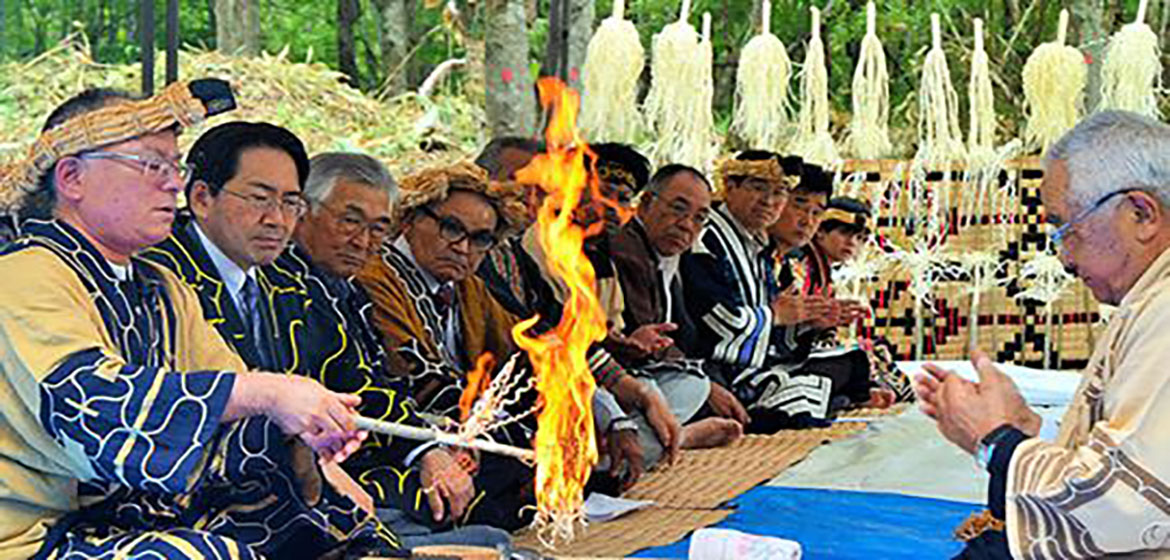THE ASAHI SHIMBUN
After more than a century of forced assimilation and discrimination that nearly blotted out their culture, the Ainu are finally to be recognized as indigenous under legislation to be submitted to the ordinary Diet session.
A draft bill was approved on Feb. 5 by a joint meeting of entities within the ruling Liberal Democratic Party, including its Land, Infrastructure, Transport and Tourism Division.
While banning discrimination against the Ainu people, the bill also has provisions to establish new subsidies to promote tourism to the northernmost main island of Hokkaido where Ainu are from.
The government expects the legislation to be enacted during the current session.
The inclusion of wording recognizing the Ainu as indigenous was described as a "step forward" by Shiro Kayano, whose late father, Shigeru, was the first Ainu to serve as Diet member in 1994.
The draft bill states its objective as realizing a society that will respect the pride of the Ainu as an ethnic group. Legal restrictions will be relaxed to allow the Ainu to engage in traditional fishing practices.
A subsidy of 1 billion yen ($9 million) will be proposed in the fiscal 2019 budget to promote the development of Ainu culture as a tourism resource as well as provide support for bus operations to help support Ainu communities.
The present law to promote Ainu culture is focused on culture promotion and welfare measures to improve the daily lives of the Ainu people. The new bill will be an effort to implement a more comprehensive package of measures to promote local communities and industries with a view to also expanding international exchanges.
Factors that prompted the move include Japan's historical treatment of the Ainu and growing demands from the international community to provide adequate recognition of the Ainu as an indigenous people.
It also is intended to help the government achieve its target of foreign tourist numbers to 40 million by 2020 when Tokyo will host the Summer Olympics and Paralympics.
Other governmental promotional efforts include plans to open the National Ainu Museum and Park in Shiraoi, Hokkaido, in April 2020, with a goal of attracting 1 million visitors annually.
When Chief Cabinet Secretary Yoshihide Suga visited Hokkaido in August 2018, he told reporters, "Having the world understand the splendid aspects of Ainu culture will contribute to international goodwill and lead to promotion of tourism."
But for the Ainu people, the bill comes after more than century of discrimination, poverty and fears that their cultural traditions were being erased.
Their native Hokkaido was effectively taken over after the Meiji Restoration of 1868. Not only has the government never recognized the Ainu as indigenous, but a law passed in 1899 rejected Ainu culture and called for steps to assimilate the Ainu into the mainstream population.
It was not until 1997 that the law was abolished and replaced with the current law to promote Ainu culture.
But various surveys show that descendants of Ainu still have it tougher than most.
In 2017, the Hokkaido government conducted a study of 63 municipalities where Ainu were confirmed to be living. One finding was that only 33.3 percent of Ainu went on to university, compared to the overall rate of 45.8 percent for those 63 municipalities. Of the 671 people interviewed for the study, 23.2 percent said they had been discriminated against for being Ainu.
With many choosing to not disclose their Ainu roots, it is not even clear how many have ethnic ties to the Ainu.
(This article was compiled from reports by Naoki Matsuyama and Fumiko Yoshigaki.)
Source:
Related to SDG 10: Reduced inequalities



